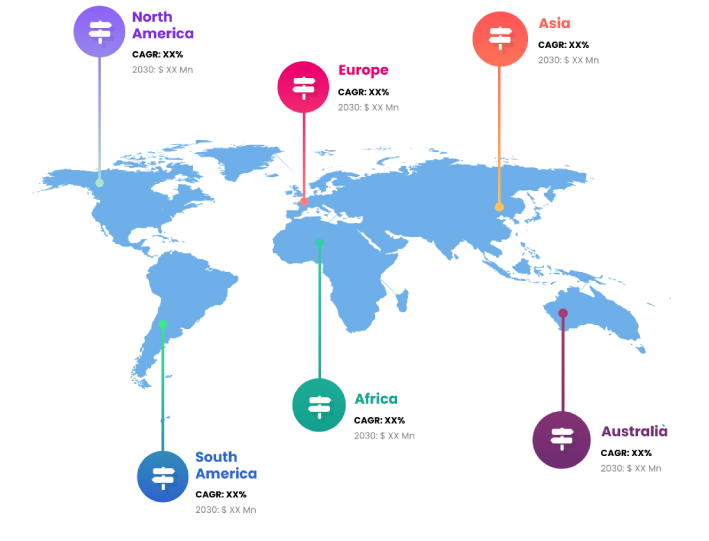
As more and more businesses invest in data centers and HPC infrastructure, demand for FPGAs is projected to increase. In order to implement the Internet of Things, data centers are required because of the massive amounts of data generated by the interconnection of various devices and sensors. In order to offload and speed up certain services, FPGAs are being included into data centers. Offloading computational duties from the central processing unit (CPU) of servers, they improve the reaction speed, throughput, and energy efficiency of high-performance computing, advanced driver assistance systems, the Internet of Things, and 5G devices.
Security issues owing to hidden faults in FPGAs are inhibiting the industry growth. In contrast to conventional hardware chipsets and ICs, FPGAs can be re-programmed. After production, this function aids developers in achieving their goals. Security threats are possible due to FPGAs' re-programmability. Some of the FPGAs include hardware flaws that might allow hackers to gain full control of the chipset and steal vital information.
eFPGAs have several applications in the aerospace sector due to their adaptability to new standards, quick prototyping, real-time processing, space optimization, security, fault tolerance, and legacy system integration. Because of these merits, eFPGA has emerged as a viable technology for enhancing the efficiency, dependability, and adaptability of aerospace programs. Customization, real-time processing, hardware acceleration, secure communication, fault tolerance, legacy system integration, SWaP optimization, and lifecycle management are just some of the many possibilities for eFPGAs in the military.
The growing demand from smartphones is a major factor in the field programmable gate array (FPGA) market CAGR. FPGAs in smartphones and other mobile devices have been a pipe dream for a long time because of their large physical size. Smartphones and mobile device CPUs have extremely short development cycles due to the rapid pace at which new application needs are being met, such as the addition of larger screens and additional sensors. The pressure to meet deadlines has increased the use of powerful application processors like the Qualcomm Snapdragon and the Texas Instruments OMAP.
While small chips can be manufactured in a year or less, larger chips like application processors take two to three years to develop. As soon as the computers become accessible, new demands are introduced. As a result, application developers must postpone their ideas until a processor compatible with their thoughts is available. This gap in the CPU development process can be bridged using FPGAs. FPGAs are increasingly being included into smartphones and other mobile devices due to the versatility they offer application developers. New, smaller-sized FPGAs, such as the ICEs FPGA product line from Lattice Semiconductor, have had a major impact on the use of FPGAs in mobile devices. Smartphones rely heavily on FPGAs for the processing of sensor input. The input ports of modern application processors, like the Qualcomm baseband processor MSM8X55, are sometimes insufficient to process signals from sensors.
Based on technology, the worldwide FPGA market is split into SRAM, EEPROM, Antifuse, Flash, and Others. In 2019, a sizable chunk of money came from the Static Random Access Memory (SRAM) market. It is anticipated that flash-based FPGAs would see the highest adoption rate within the estimated time frame. Key competitors in the market are expanding their offerings of flash field programmable gate arrays to meet the needs of a growing customer base and strong demand.
Report Coverage
Global FPGA research report categorizes the market for global based on various segments and regions, forecasts revenue growth, and analyzes trends in each submarket. Global FPGA report analyses the key growth drivers, opportunities, and challenges influencing the global market. Recent market developments and FPGA competitive strategies such as expansion, product launch and development, partnership, merger, and acquisition have been included to draw the competitive landscape in the market. The report strategically identifies and profiles the key FPGA market players and analyses their core competencies in each global market sub-segments.
| REPORT ATTRIBUTES | DETAILS |
|---|---|
| Study Period | 2017-2030 |
| Base Year | 2022 |
| Forecast Period | 2022-2030 |
| Historical Period | 2017-2021 |
| Unit | Value (USD Billion) |
| Key Companies Profiled | Microchip Technology Inc., Cypress Semiconductor Corporation, Lattice Semiconductor, QuickLogic Corp., Achronix Semiconductor Corporation, Texas Instruments Incorporated, Teledyne Technologies Incorporated, Xilinx Inc., and Intel Corporation |
| Segments Covered | • By Product |
| Customization Scope | Free report customization (equivalent to up to 3 analyst working days) with purchase. Addition or alteration to country, regional & segment scope |
Key Points Covered in the Report
- Market Revenue of FPGA Market from 2021 to 2030.
- Market Forecast for FPGA Market from 2021 to 2030.
- Regional Market Share and Revenue from 2021 to 2030.
- Country Market share within region from 2021 to 2030.
- Key Type and Application Revenue and forecast.
- Company Market Share Analysis, FPGA competitive scenario, ranking, and detailed company
profiles. - Market driver, restraints, and detailed COVID-19 impact on FPGA
Market
Competitive Environment:
The research provides an accurate study of the major organisations and companies operating in the global FPGA market, along with a comparative evaluation based on their product portfolios, corporate summaries, geographic reach, business plans, FPGA market shares in specific segments, and SWOT analyses. A detailed analysis of the firms' recent news and developments, such as product development, inventions, joint ventures, partnerships, mergers and acquisitions, strategic alliances, and other activities, is also included in the study. This makes it possible to assess the level of market competition as a whole.
List of Major Market Participants
Microchip Technology Inc., Cypress Semiconductor Corporation, Lattice Semiconductor, QuickLogic Corp., Achronix Semiconductor Corporation, Texas Instruments Incorporated, Teledyne Technologies Incorporated, Xilinx Inc., and Intel Corporation
Primary Target Market
- Market Players of FPGA
- Investors
- End-users
- Government Authorities
- Consulting And Research Firm
- Venture capitalists
- Third-party knowledge providers
- Value-Added Resellers (VARs)
Market Segment:
This study forecasts global, regional, and country revenue from 2019 to 2030. INFINITIVE DATA EXPERT has segmented the global FPGA market based on the below-mentioned segments:
Global FPGA Market, By Technology
SRAM-Based FPGA
Anti-Fuse Based FPGA
Flash-Based FPGA
Others
Global FPGA market, By Application
Data Processing
Consumer Electronics
Industrial
Military & Aerospace
Automotive
Telecom
Others
Global FPGA Market, By Configuration
High-End FPGA
Mid-Range FPGA
Low-End FPGA
Global FPGA market, Regional Analysis
- Europe: Germany, Uk, France, Italy, Spain, Russia, Rest of Europe
- The Asia Pacific: China,Japan,India,South Korea,Australia,Rest of Asia Pacific
- South America: Brazil, Argentina, Rest of South America
- Middle East & Africa: UAE, Saudi Arabia, Qatar, South Africa, Rest of Middle East & Africa
You will get in-depth and extensive fpga market size market research and competitor analysis for your business to help you develop more profound insights into the fpga market size Market.
Through INFINITIVE Data Expert is a professional Market Research services, I will identify the fpga market size market size, demand & opportunities, growth rate, and target audience with a comprehensive analysis of your competitors.



